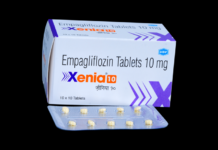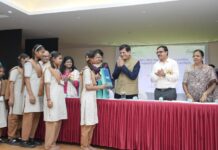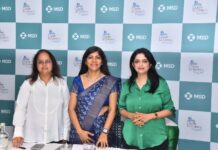LANXESS Liquid Purification Technologies at IFAT, October, 15-17, 2018, Mumbai, Hall 4, Stand D 11.
Mumbai, November 10, 2018: With 80 years of experience in water treatment and purification, the specialty chemicals company LANXESS with its Liquid Purification Technologies business unit (LPT), has a solid basis to appear at this year’s IFAT. The world’s leading trade fair for water, sewage, waste, and raw materials management takes place in Mumbai on October 15-17, 2018.
The Liquid Purification Technologies business unit now also sells modules for ultrafiltration (UF) through a marketing and distribution cooperation agreement with French UF membranes and system manufacturer Polymem. This adds ultrafiltration (UF) to the existing LANXESS range of water treatment technologies. It is a high-value, win-win partnership in this fast-growing membrane market for water treatment.
Responses to global challenges
The reliable supply of drinking water to the world’s population is not the only challenge that constantly calls for new, innovative types of solutions. Water management in industry and agriculture also involves considerable challenges. “Intelligent technologies and tailored products that we offer, can help in the development of sustainable solutions. Efficient processing and recycling methods will be essential in order to meet the demand for water in the future,” adds Mr. Prakash Shanmugam, GM & Head of Business Unit – Liquid Purification Technologies (LPT) in India.
Performance times two
Numerous examples from the municipal and industrial sector show how ion exchange resins (IX) and reverse osmosis (RO) membranes complement one another to achieve optimal results in water treatment. As such, ion exchange resins can be installed in front of an RO unit, such as to remove organic impurities through adsorption, which would otherwise enable fouling on the membranes. Previous partial softening of the feed water with weak acidic ion exchange resin can also reduce both scaling on the membrane elements and the salt content of the feed with practically stoichiometric application of the regeneration agent. This enables more efficient operation of the RO plant. This procedure is recommended for highly carbonated, industrial process water.
Tailored ion exchange resins
A particular strength of ion exchange resins is their ability to selectively remove heavy metal cations or complex anions during the water purification process. LPT will present ion exchange resins, which include Lewatit TP 107 and Lewatit TP 207. The former, a strong basic, macroporous resin based on an interlaced polyacrylate, enables the efficient removal of various types of polyatomic oxyanions. Notable is the high capacity for chromate, as well as vanadate and molybdate, during the treatment of drinking water. Similar to Lewatit TP 106, it is certified according to NSF/ANSI standard 61.
The weak acidic, monodisperse chelating resin Lewatit TP 207 exhibits high selectivity for bivalent heavy-metal ions in a neutral solution. It can be used to selectively remove copper ions, as well as lead, nickel, or zinc, for example, even in the presence of complexing amines, polyvalent carboxylic acids, or phosphates. With its Bayoxide product line, LPT also offers iron oxide adsorbents specially developed for the separation of arsenate and phosphate.
Energy-efficient membrane elements
Membrane elements from the Lewabrane RO ULP (Reverse Osmosis – Ultra-Low Pressure) series are the new high-end standard with regards to energy efficiency. They are designed for a test pressure of just 7.6 bar. Compared with standard elements, a 40 percent reduction in operating pressure is therefore sufficient. Energy and operating costs are reduced accordingly. A membrane with high water permeability and high flow rates with Lewabrane RO ULP, helps to sustainably reduce investment costs for water purification.
The ULP membrane has the highest surface hydrophilicity of all Lewabrane types. A thin, protective water film on the surface of the membrane therefore prevents the adsorption of organic substances, or organic fouling. The ASD feed spacers used in the elements, which create more space for the flowing water between the membrane surfaces, also reduce fouling.
LewaPlus 2.0 – user-friendly IX and RO design
All findings from own research and development work and the experience from numerous reference projects throughout the world are continuously implemented in the LewaPlus design software, which is constantly developed by LPT. This makes it the perfect tool, especially for the design of combined reverse osmosis/ion exchange systems for water purification. Visitors to IFAT can experience the recently released and even more user-friendly version LewaPlus 2.0 in action.
LPT offers a comprehensive range of tailored ion exchange resins and RO membrane elements for various types of applications. For detailed information, visit http://lpt.lanxess.com.
Corporate Comm India(CCI Newswire)






















